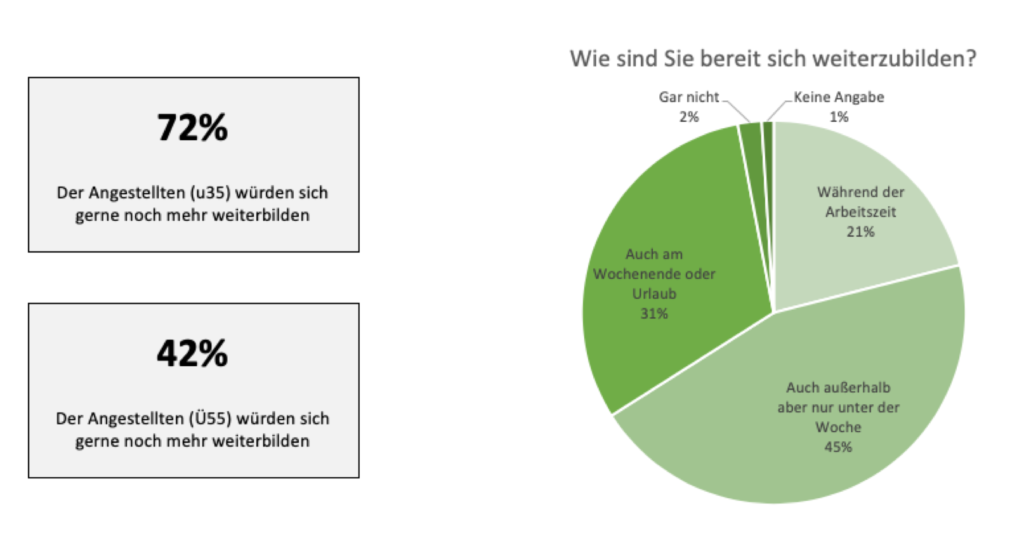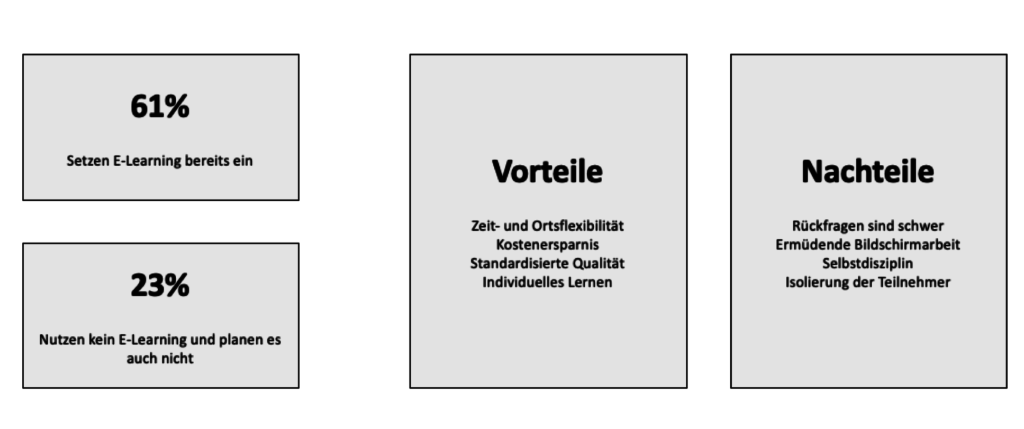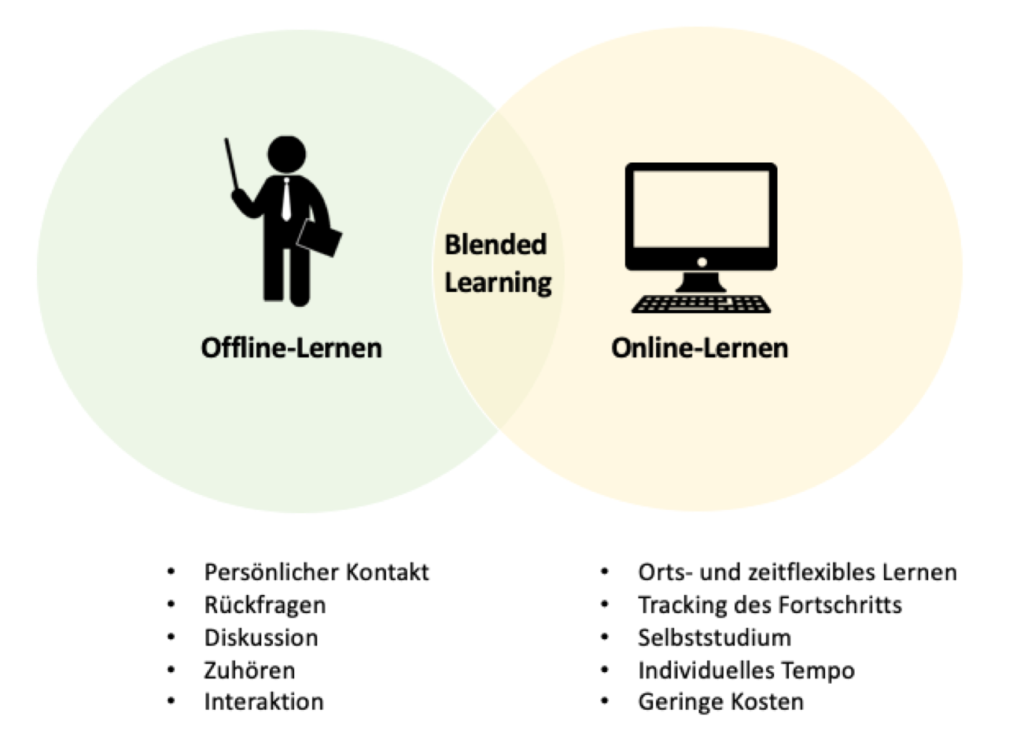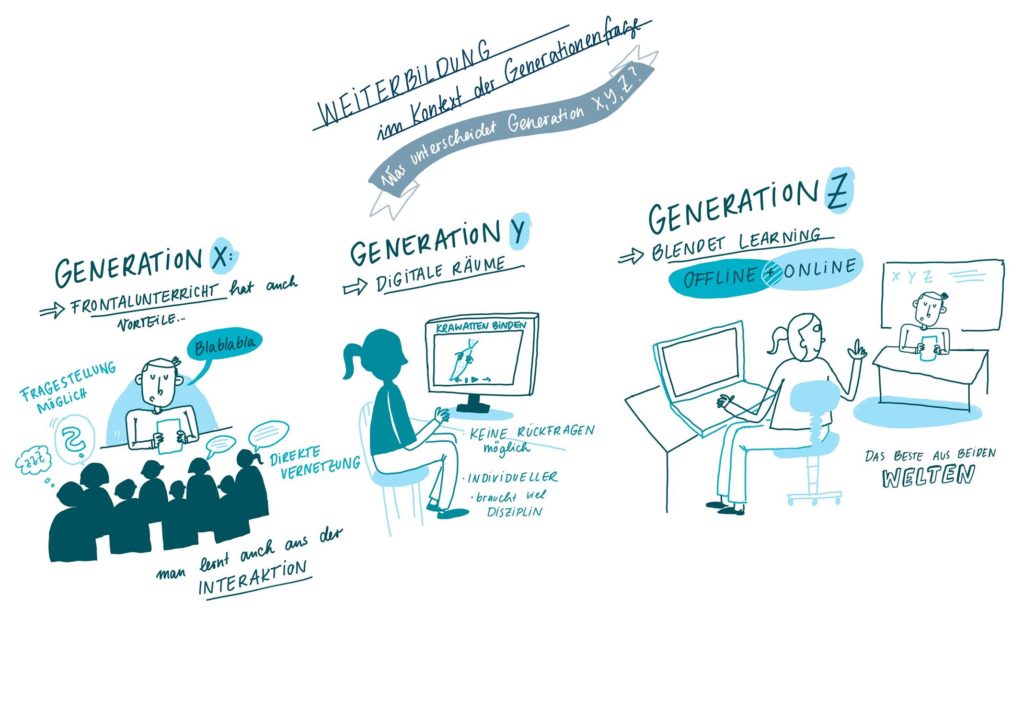Learning is like rowing against the current. If you stop it, you drift back.
Laozi – Chinese philosopher
Learning is becoming more and more important in companies. Especially in times of increasing digitization, it is important to ensure your own job security through lifelong learning and not to be left behind. A survey of more than 1,000 employees shows that 72 percent of the under 35-year-olds and 42 percent of the over 55-year-olds asked for more training on a regular basis. A large percentage would even continue their education in their free time and on weekends. This article looks at three possible types of corporate training.

Frontal teaching: plannable and homogeneous
We all know it very well from our school days: frontal teaching. And you have certainly already attended one or the other seminar with this teaching format in the company. The advantage is that you have regular times and planning. Direct queries, networking – at least during the breaks, and little discipline are also an advantage.
Disadvantages are fatigue from listening as well as the high level of dependency on the teacher and the often lacking interactive or individual needs.

E-learning: When, where and how I want!
The term e-learning refers to forms of learning in which electronic or digital media are used to support learning processes.
In practice, e-learning has many faces. I know the format, for example, from short explanatory films for everyday life. Surely each of you has privately watched a cooking video, a tie-tying tutorial or a do-it-yourself on YouTube. There are also virtual classrooms.

According to a survey of 200 companies, 61 percent are already using this new form of learning and only 23 are fundamentally excluding it. The advantages lie in learning that is flexible in terms of location and time, cost savings and individual courses with the same quality thanks to being independent from the teacher. Disadvantages can be seen in the lack of consultation options, strongly required self-discipline, isolation of the participants and fatigue from working on the screen.

Blended learning: Simple, quick and structured
A very new type is blended learning, which combines both types. In addition to face-to-face days, there are also virtual learning units. In the beginning, I often experienced this in part-time studies. In this type of learning you combine both advantages of the types of learning. The current disadvantage is that this type is difficult to organize for service providers and that is why the concept is not that widespread yet, but it represents the future for me.

Learning in the context of Generation X, Y and Z.
Every person and every generation learns differently. With a view to the three learning formats, I gave a lecture at an event at the Innovation Office for Specialists (DIHK). An artist (Jana Kreisl) drew the following picture at the event, which sums up learning in the context of the generations very well.

It shows that Generation X has long relied on the tried and tested frontal teaching. Then e-learning was developed for Generation Y, which should enable learning at any time and anywhere. In the context of Generation Z, who want the full range of possibilities, concepts of blended learning fit.
Conclusion
According to current statistics, over 13 million jobs are at risk from digitization and it is important to continue to educate yourself. That is why learning is not only important, it is crucial for the future. Three types of learning have been analyzed in this article. How you want to learn is up to you. It is only important that you continue to educate yourself on a regular basis.
Image source: Pixabay
[werbung] [fotolia]


